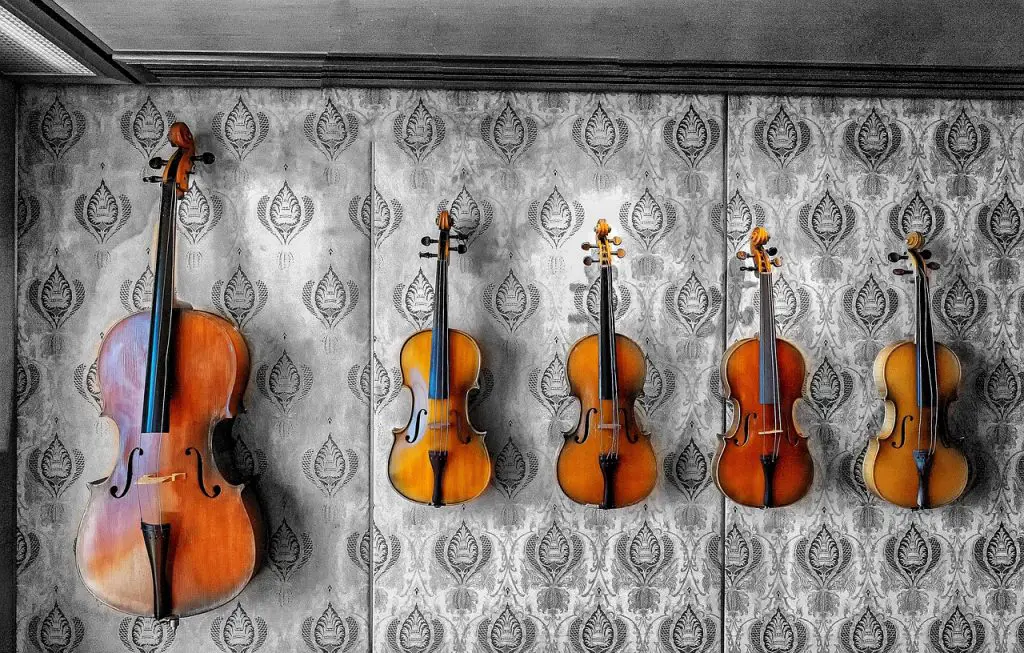
Viola vs Violin – 5 Key Differences Between The Two Instruments
The violin and viola look similar, can sound similar and also feel similar. Even experienced musicians can mistake the two until they look closely. So how do these two instruments differ?
There are five key differences between a violin and viola and this article will outline all of them. By the end of this page, you will be able to identify the difference between the two instruments.
Contents
Viola vs Violin
The violin and viola are very similar instruments in many ways. Originally designed back in the 17th century, the two have changed very little in terms of design, manufacture and sound.
The main differences between a violin vs viola are:
- Size
- Sound
- Range
- Strings
- Clef
There are also minor differences such as where the two sit within an orchestra and the playing technique but these five are the main ways we can differentiate between a violin and viola.
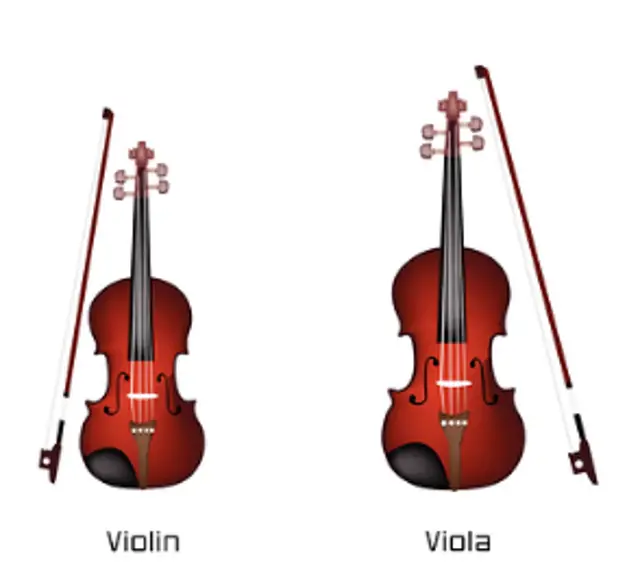
Size
The difference in size between the violin and viola is likely to be the first thing you notice. The violin is smaller than the viola, sometimes by up to 25%. The size difference is proportional, so the viola is longer, wider and taller than a violin with a longer neck and larger fixings.
The body of a viola is typically between 38cm and 43cm long whereas the violin has a body that is 35.5cm long (4/4). Conversely, the violin bow is 1cm longer than that of the viola.
Finally, violins tend to come in nine sizes whereas the viola has four main sizes. That excludes some custom sizes for students of course!
Here are the sizing tables for both instruments:
| Violin size | Length from neck to arm | Violinist age | Violin Model Example |
| 1/16 | From 35 to 38 cm | From 3 to 4 | |
| 1/10 | From 39 to 42 cm | From 4 to 5 | |
| 1/8 | From 43 to 46 cm | From 5 to 6 | |
| 1/4 | From 47 to 51 cm | From 6 to 7 | |
| 1/2 | From 52 to 56 cm | From 7 to 8 | |
| 3/4 | From 57 to 60 cm | From 9 to 11 | |
| 4/4 | More than 60 cm | 11 and over |
| Viola size | Length from neck to arm | Violist age | Viola Model Example |
| 12″ | From 53 to 55 cm | From 6 to 7 | |
| 13″ | From 55 to 59 cm | From 7 to 9 | |
| 14″ | From 59 to 63 cm | From 9 to 12 | |
| 15″ | From 63 to 65 cm | From 10 to 12 | |
| 15″ 1/2 | From 65 to 67 cm | Adult | |
| 16″ or 16 1/2 | More than 60 cm | Adult |

Sound
When you hear the two instruments played, you immediately know which is which. The viola has a deeper, mellower sound that sets it apart from the violin. Due to its size and the C string, the viola can play four steps lower than a violin.
The violin can play higher notes and hit that sweet spot within compositions. This is why you hear violin solos and not viola solos. There is something within the violin’s range that works a special kind of magic.
Due to this characteristic, the viola will normally play the harmony within an orchestra while the violin plays melody. Most musicians will have a natural preference for one over the other which will help decide which instrument is for you.
The purpose of the viola in an orchestra is to provide harmony and that middle sound. A typical orchestra will have a single section of violas.
The purpose of a violin in an orchestra is to provide melody and lyrical lines. Depending on the orchestra and the music, you may have one section of violins providing melody and the other providing the lyrical element. These are often referred to as first and second violinists.
The differences in sound is an important point so let’s hear both in action.
Here’s a viola:
This isn’t your run of the mill viola though. It’s a $45 million Stradivari playing Suite No. 3 in C by Johann Sebastian Bach.
Here’s a violin:
This time, we have selected a contemporary piece to demonstrate the timeless appeal of the violin. This time it’s the theme music to James Bond Skyfall played by Caroline Campbell.
We could write for days about the differences between the violin and viola. It’s only when you hear it for yourself that it becomes immediately obvious!
Range
We touched on the range of the violin and viola a moment ago but let’s cover it in a little more detail here.
Viola has C, G, D, A tuning and can play from C on an open C string all the way up to A on the A string.
A violin has G, D, A, E tuning and can play from G on the lowest open string up to B on the E string if your fingers can stretch that far.
As mentioned, the viola is four steps lower than violin and places it between the violin and cello within an orchestra. It is this range that makes it perfect for harmonies. You may not always notice a viola in an orchestra but you would always notice if it was missing!
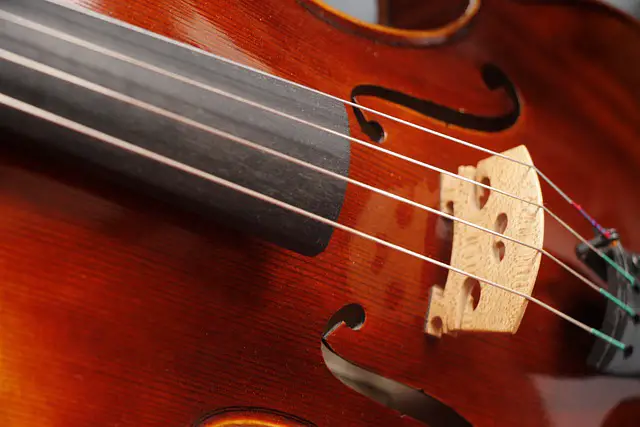
Strings
Mainstream viola and violins have four strings that are controlled by the fine tuner and pegs. They look the same but aren’t.
Viola strings are thicker and will be strung C, G, D, A. Thicker strings require a faster bow movement and heavier hand than a violin to achieve that rich sonorous sound we are looking for.
Violin strings are thinner and will be strung G, D, A, E.
The difference in strings means the two instruments are tuned differently. A viola is a fifth lower than a violin which again, feeds into the sound and the viola’s position within an orchestra.
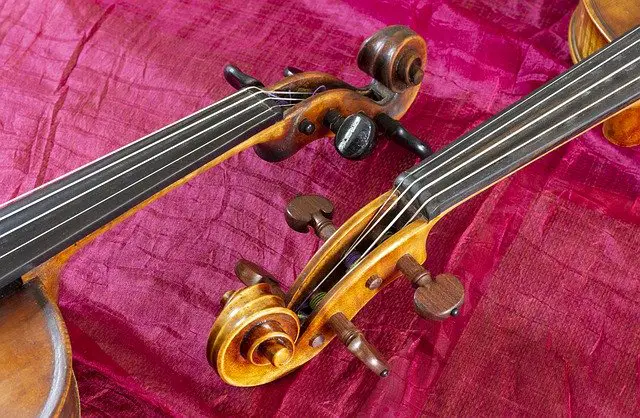
Clef
The differences outlined so far illustrates that the violin and viola differ in sound and range and that feeds into the clef.
A viola is a mid-range instrument that uses Alto Clef for notation. That means you have to learn the Alto Clef which is unique to the viola.
The violin is a higher range instrument which is played in Treble Clef. It’s the highest range of the stringed instruments. It is also a more commonly used clef and presents less of a learning curve if switching from other instruments.
Other differences between violin vs viola
There are other minor differences between the violin and viola. One is technique. The viola needs a heavier hand and more strength to play while the violin is much more delicate.
Larger strings and a larger instrument size means musicians require more pressure on the bow and the strings to achieve a rich sound on viola. This means the very youngest musicians may initially struggle.
The violin uses smaller strings and requires less pressure on the neck and the bow to achieve its unique sound. It’s a more delicate touch that contributes to the learning curve the violin requires.
Famous viola player Clare Finnimore said:
“It is difficult to explain how the technique changes when you go from a violin to a viola but I think that when lots of violinists first pick up the viola, the bow stroke is much lighter on the violin. With the viola it’s a firmer sort of bow hold, obviously the space between the notes is bigger, the neck is thicker, so all those things, you just have to sort of enlarge everything a little bit.
“The bow is longer, it is heavier. Maybe you have to space your fingers out a little bit more on the bow in order to produce a sound. This is all very general, I think the most difficult thing is going back the other way if you play the viola and then you go back to playing the violin it can sound terribly sort of scratchy and shaky because your movements are too heavy and not delicate enough.”
Which came first, the violin or viola?
Nobody actually knows. The main theory is that the viola came first as the two instruments are from the family called viola da gamba developed in the 15th century and perfected in the 16th century.
The family included both viola and violin and was thought to have diverged into viola da gamba (viola of the leg which turned into cello) and viola da braccio (viola of the arm which gave us viola and violin).
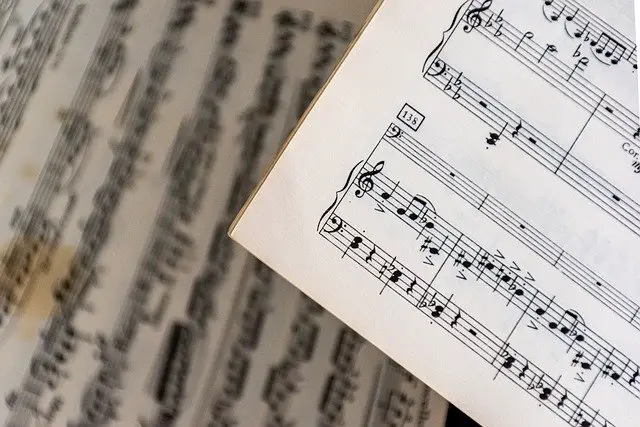
Which should you choose, the violin or viola?
Now comes the million dollar question. If you’re thinking of taking up a stringed instrument, should you choose the violin or viola?
Much depends on where you think you might want to end up and what hits your ear. The viola plays harmony and is an integral but largely low key part of an orchestra.
A violin plays melody and has the opportunity for solos. The position is more prominent within an orchestra but there is much more competition for violinist positions within orchestras.
There are hundreds of compositions for violin and even those not written specifically for the instrument will have prominent elements featuring violin.
Musicians say the viola is slightly easier to learn and transition is manageable. However, there are fewer parts written for viola and there is much less demand for professional viola players. There is less competition too, if that helps.
If you would like to be a professional musician, the viola is ideal for those who don’t want to stand out and who would prefer being a part of a larger orchestra. The violin is for those who don’t mind standing out and who can play as part of a team but also doesn’t mind their time in the spotlight.
There is no wrong answer when deciding whether to learn the violin or the viola. Both can sound lovely in the right hands, both are musical instruments of great provenance and both have an indelible place in music.
Whatever instrument you choose, we’re sure the musical world will be a better place with you in it. Good luck with whichever you choose!

Sorry…it’s a bit offensive to say that the viola is easier to learn. Viola and violin are different, but one is not easier than the other. It all depends on the individual’s talent. The key differences mentioned here do not touch on the true differences between the hearts of the instruments. I find it rather annoying when a violinist believes that they are capable teaching viola after a mere one semester of required viola lessons in their first university degree because they mastered the above differences.
It would be great if you could elaborate with your input on what those differences are that we have not mentioned.